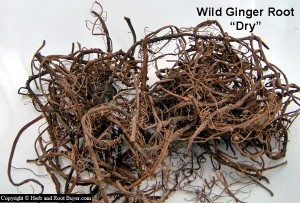Wild Ginger Root – Asarum canadense
|
Current Demand = Normal |
Parts Used: Rhizome & Root |
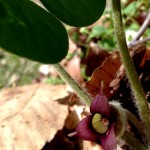 |
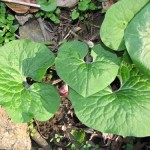 |
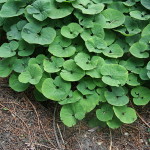 |
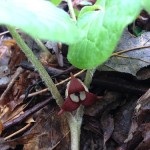 |
Family: Aristolochiaceae
Common Names: Canada Snakeroot, American wild ginger, serpentaria, asaro…
Description:
Wild ginger is native to the USA and is a spring wildflower which grows in rich woods and wooded slopes.
It is a stem less plant with 2 heart-shaped to kidney-shaped, dark green, well veined, basal leaf. The flowers are small, maroon, unpleasantly scented, bell-shaped found in the leaf junction. The flowers appear in spring and bloom through April. The roots produce a scent similar to the ginger.
Harvesting/Drying:
Parts Used: rhizome, root
For maximum potency Wild Ginger should be harvested in the late summer and fall. Fall harvest will also allow the plants to seed. Only the plant roots have medicinal properties and market value. Wild ginger root has a long skinny root system which grows fairly shallow to the ground surface and is often able to be harvested quickly by hand. Gather the larger more mature plants leaving plenty of younger smaller plants to seed the area for future harvest.
After harvest, the roots should be washed in cold water and all foreign matter (leaves, rocks, dirt and other roots) must be removed. Unless your buyer is purchasing fresh dug roots (which often they do) the clean roots need to be dried. Wild Ginger root holds a great deal of moisture.
It is not uncommon for wild ginger root to dry 10:1, meaning it could take as much as ten pounds of fresh root to make one pound of dry root. Wild ginger roots can be dried in the sun although if possible dry indoors in a well ventilated barn loft or attic to protect from the elements. If natural heat is not available, you may need to add heat and a fan for continuous air flow.
The key to drying any root, herb or bark in an even combination of heat and airflow. Never use an oven or microwave.
Wild ginger root will be completely dry (largest stem will snap not bend) in 3-9 days depending on the size of the root and the drying conditions. Place the herb carefully into a cardboard box or paper bag for storage in a dry area until you are ready to sell or use. Do not store the root in plastic or it will mold.
Planting/Cultivation:
Growing Region: Wild Ginger can be found in Eastern United States and Canada. It is common thru-out the Midwest, south to the Carolinas, west to Oklahoma and north to the Dakotas. Large populations exist in Kentucky, Indiana, Illinois, Ohio and West Virginia. It is often found in rich moist woods often larger populations are found on upper portions of timber areas.
The plant prefers a rich moist neutral soil in the woodlands or a shady position in the rock garden. The plants often self-sow when growing in a suitable position.
Seed: best sown in a cold frame as soon as it is ripe in the summer. Stored seed will require 3 weeks cold stratification and should be sown in late winter.
The seed usually germinates in the spring in 1 – 4 or more weeks. When large enough to handle, prick the seedlings out into individual pots and grow them on in light shade in the greenhouse for at least their first winter. Plant them out when large enough in late spring.
Attributes (Images)
By Fritzflohrreynolds (Own work) [CC BY-SA 3.0], via Wikimedia Commons
By Earthdirt Please attribute work to: Chris S. Packard (Own work) [GFDL, CC-BY-SA-3.0 or CC BY 2.5], via Wikimedia Commons
By Michael Wolf (Own work) [GFDL or CC BY-SA 3.0], via Wikimedia Commons
 Root Buyer
Root Buyer